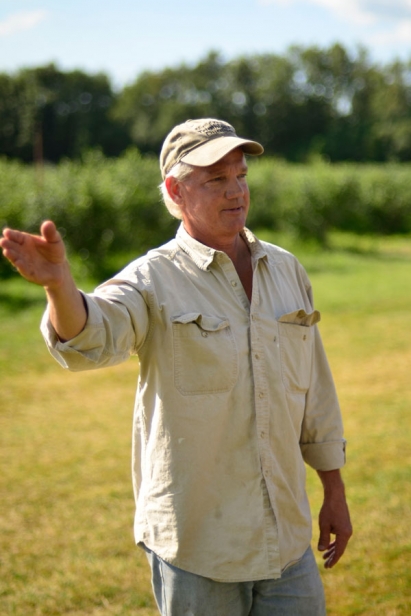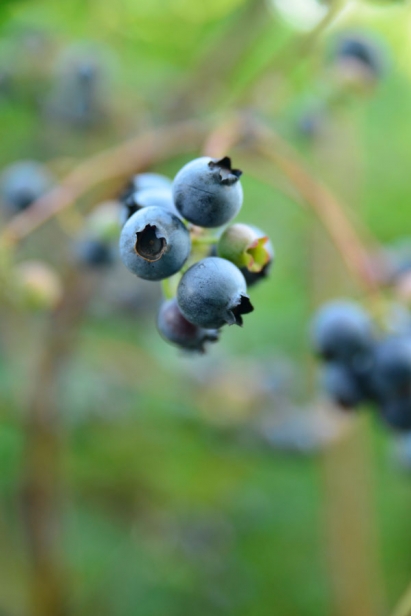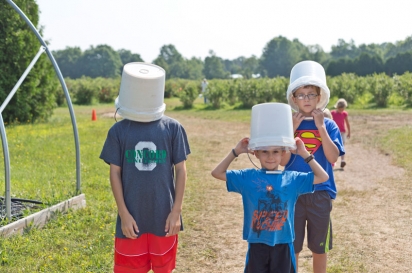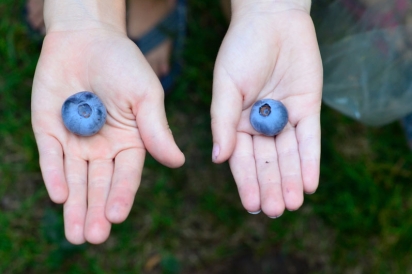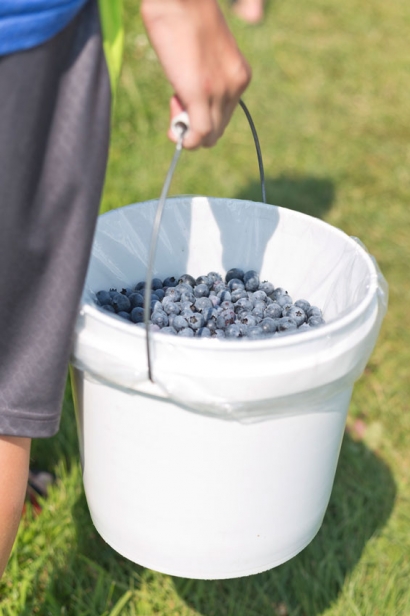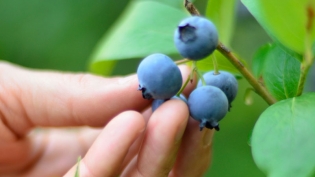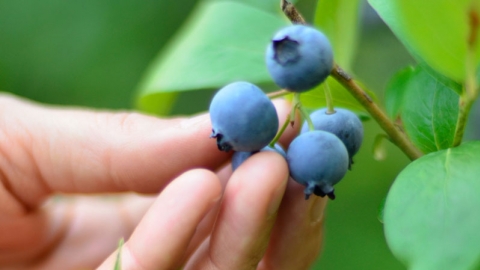A Beautiful Blue Tradition
 Mishawaka's Blueberry Ranch is the largest certified organic blueberry farm in the Midwest.
Mishawaka's Blueberry Ranch is the largest certified organic blueberry farm in the Midwest.
Every July, first thing after breakfast, before the heat of the day sets in, the van gets packed with essentials—sunscreen, floppy hats, water bottles, snacks—and my three boys and I head out to The Blueberry Ranch in Mishawaka, Indiana, to go blueberry picking.
When we arrive, the barn is filled with chatter and there are plenty of smiling workers in blue T-shirts milling about. There are older customers using canes, younger customers strapped into baby carriers, and every age in between. We grab our buckets from a young worker who greets us with a big grin. We hop onto the wagon pulled by a (what else?) blue tractor that takes us out to where we’ll be picking. There, another worker is waiting with a smile, and shows us where to pick.
The Blueberry Ranch began in the late 1950s. In 1982, John Nelson bought it after having managed the farm for a few years. Though it didn’t start out organic, “Blueberry John” felt that growing that way was simply the right thing to do.
“We’re located in a residential area, and I want to be a good neighbor. I feel a sense of responsibility to the land,” he explains.
The journey, though long and challenging, has been rewarding. Nelson began small, using all-organic methods on fields on his home farm. “It took a long time because I wanted to make sure I had the process down before opening it up to a larger scale.”
Once Nelson was ready to go completely organic with the farm, in the late 1980s, the process of becoming certified took three years. The Blueberry Ranch was first certified organic in 1991. But, according to Nelson, it’s been totally worth it. “When I hear how appreciative our customers are, it is so gratifying,” he says. The Blueberry Ranch is now the largest certified organic blueberry farm in the Midwest.
Preparing for the blueberry harvest begins each year in February, when most of us are still drinking hot chocolate and bundled in warm layers. Braving the cold, workers begin to prune the bushes. This is the most crucial phase of the process, John asserts. “The goal is to prune every bush, every year.” Pruning results in nutrients getting to the berries, right where they belong. Much later in the spring, when the bushes begin to bloom, bees are brought in for pollination. Once July 4 rolls around, The Blueberry Ranch is open for business.
Although The Ranch has a loyal and far-reaching customer base, they don’t track exact numbers. But Nelson says he sometimes counts cars in the parking lot. “Our lot can hold 300 cars at one time. And we have exceeded that twice."
Back in the field, we each are assigned our own bushes. Each cluster of ripe berries is like finding a treasure. “Ooh! Look at this one!” squeals Jacob, 8. “Guys, look at all these huge berries!” exclaims Aaron, 11. “JACKPOT!” announces Caleb, 13, as he lifts up the branches, yielding blue jewel after jewel.
The ripe berries pop off like marbles, gently rolling into our palms. Pick a few, eat a few, pick a few, eat a few. And that’s how the morning passes. There are threads of conversations floating around us, a cool breeze, and sunshine on our backs. The work is steady but not hurried. We are connecting with each other and with nature, and I am struck by the beauty of it all.
And then the moment passes. They are getting hot, tired and the water bottles are empty. So much for the moment of bliss! But I’ll take it, and we head back to the barn with our harvest.
Remembering how my boys were popping berries into their mouths one right after the other, I just had to ask Blueberry John: Is it OK to eat a few berries now and then while you’re picking? “That’s all part of the experience,” he assures me. “I want folks to enjoy it, so we incorporate on-site eating into the price.”
And we do enjoy it. As we head home with our bags of berries, I am already planning to make my Amish grandmother’s blueberry cobbler recipe for supper. We like it best warm from the oven, with milk on top. I’ll save some fresh berries for eating and then freeze the rest to enjoy all year long. Until next July, when the tradition continues.
Look for the recipe for Grandma Wilma’s Blueberry Cobbler here and on page 32 of the Summer Issue.



